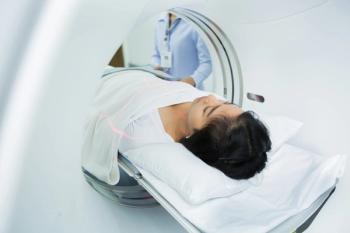
- Diagnostic Imaging Vol 32 No 4
- Volume 32
- Issue 4
CT found effective for Dx lung collapse in women
Using high-resolution CT scans to screen for lymphangioleiomyomatosis is cost-effective in women between the ages of 25 and 54 who don’t smoke and come to the emergency room for the first time with a collapsed lung, according to University of Cincinnati researchers.
Using high-resolution CT scans to screen for lymphangioleiomyomatosis is cost-effective in women between the ages of 25 and 54 who don’t smoke and come to the emergency room for the first time with a collapsed lung, according to University of Cincinnati researchers.
About 5% of women who fit the “model patient” profile-a 30-year old, nonsmoking woman who comes into the emergency room with a spontaneous lung collapse-test positive for lymphangioleiomyomatosis (LAM).
Screening for LAM with high-resolution CT is the most cost-effective strategy, with approximately $32,000 per quality-adjusted life year gained, the authors said. With this data, physicians will be able to intervene with therapies more quickly and enroll patients in clinical trials that may be able to slow progression of the disease.
The study will change future guideline recommendations on how to treat patients presenting with pneumothorax, according to Dr. John Heffner, past president of the American Thoracic Society.
The findings have been published online in the American Journal of Respiratory and Critical Care Medicine.
Articles in this issue
over 15 years ago
Philips' first quarter offers hope for better imaging marketplaceover 15 years ago
MR spectroscopy readies role as cancer diagnosis, treatment toolover 15 years ago
What's old is new again, and the world rolls onover 15 years ago
Three decades take MRI from cutting edge to sustainabilityover 15 years ago
Mobile image display pioneer blazes regulatory path at FDAover 15 years ago
Dose-saving technologies proliferate throughout CTover 15 years ago
Abdominal plaque reveals coronary artery diseaseover 15 years ago
Modifying technique cuts radiation dose for CTAover 15 years ago
ACR launches breast MR accreditation programover 15 years ago
MR finds contralateral breast cancer in eldersNewsletter
Stay at the forefront of radiology with the Diagnostic Imaging newsletter, delivering the latest news, clinical insights, and imaging advancements for today’s radiologists.


























